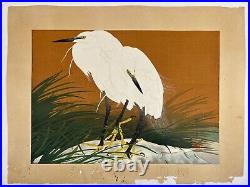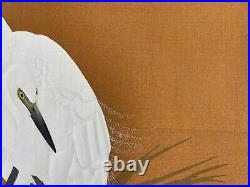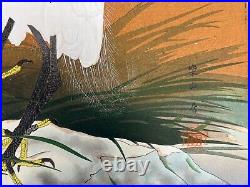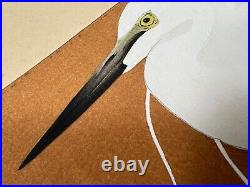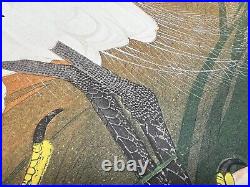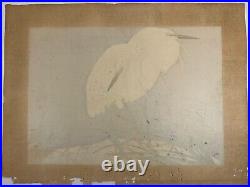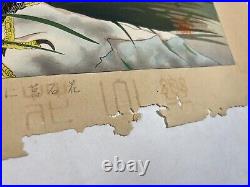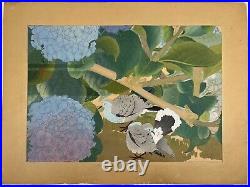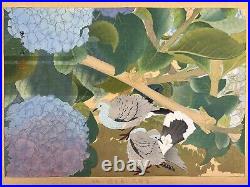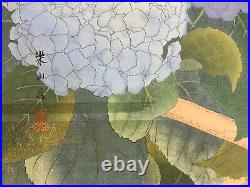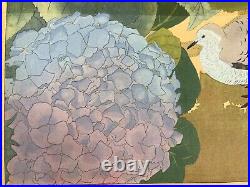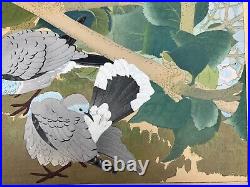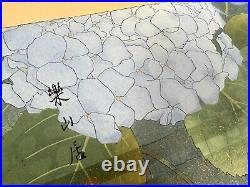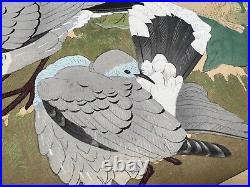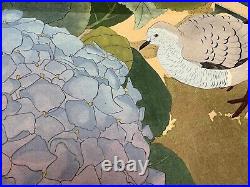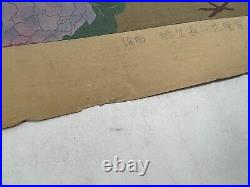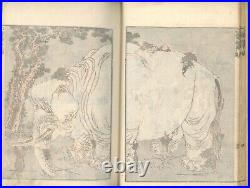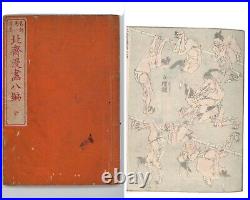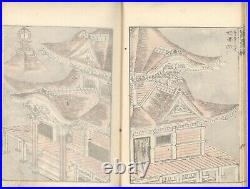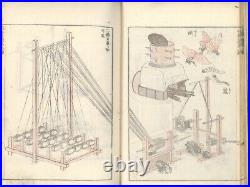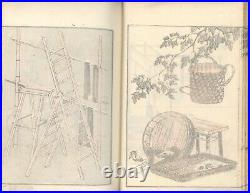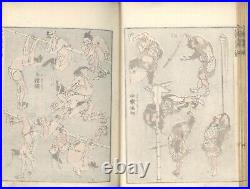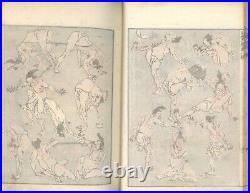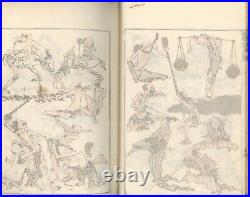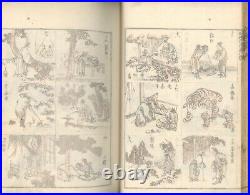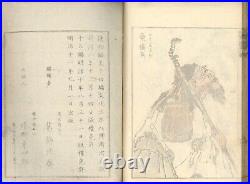Formal Name: Rakuzan kacho-gafu Egret and iris. Contents: First edition made by Rakuzan. Year of publication: 1929. Size 46×60cm(18×23.6 inch). Condition: There are insect holes and losses in the margins of the illustrations. Rakuzan was born in Kyoto. When he was young, he studied under Takeuchi Seiho, a pioneer of modern Japanese painting and a representative painter of Kyoto painting. The woodblock prints of Rakuzan have been reprinted using the same woodblock prints in recent years, but this print is a valuable first edition. This item is not new. Please refer to the description-of-item columns and the pictures.
Archive for June 17th, 2023
Japanese woodblock print Egret and iris Rakuzan 1929 Bird Original Vintage
Author: adminJun 17
Japanese Woodblock Print Hydrangea and Collared Turtledoves Rakuzan Original
Author: adminJun 17
Formal Name: Rakuzan kacho-gafu “Sasanqua and Mandarin Duck”. Contents: First edition made by Rakuzan. Year of publication: 1929. Size 46×60cm(18×23.6 inch). Condition: There is light foxing in the margins of the illustrations. Rakuzan was born in Kyoto. When he was young, he studied under Takeuchi Seiho, a pioneer of modern Japanese painting and a representative painter of Kyoto painting. The woodblock prints of Rakuzan have been reprinted using the same woodblock prints in recent years, but this print is a valuable first edition. This item is not new. Please refer to the description-of-item columns and the pictures.
KATSUSHIKA HOKUSAI GENUINE 19th CENTURY MANGA VOL. 8
Author: adminJun 17
KATSUSHIKA HOKUSAI – GENUINE 19th CENTURY MANGA VOL. (Denshin Kaishu) Transmitted From the Gods, A Revelation of All Things. A fine example of Hokusai’s Manga Volume 8. Soft, subtle printing, but revealing details that are normally lost in Meiji-era versions. EXCELLENT REGISTRY AND IMPRESSION. AN OBVIOUS EARLY PULL OFF THE BLOCKS! VERY LITTLE TO NO TONING TO THE PAPER. IMPECCABLE STATE OF PRESERVATION. NO THUMBING AT ALL. Original Edition, later Impression. Collaboration between Eriakuya and Katano Toshirö. Eriakuya Toshirö obtained all the original, 1st edition blocks in the early Meiji Period. Some of the blocks were worn down considerably, therefore there are line breaks and missing features that make these later editions less appealing. There were other blocks that were less worn, and so the publisher took full advantage of the clean blocks, by creating splendidly unique editions from 1860 thru 1875 that are in someways more satisfying than even the first edition productions. DON’T MISS OUT ON THIS OPPORTUNITY TO ADD A VERY RARE, CLEAN EXAMPLE OF HOKUSAI’S FAMOUS MANGA TO YOUR COLLECTION; PRINTED NEARLY 150 YEARS AGO. Several facts regarding hand-made washi paper. Tone, texture and thickness vary a lot when printing on hand-made paper that was produced by farmers during the winter months. As well, washi, being that it is hand-made paper, occasionally had large brown fibers or other materials that entered the water and paper vats used in production. These blemishes are of course not a misprint or damage. It seems that printmakers of that time were neither obsessive nor selective about the uniformity of each individual sheet of paper. After all, these books were never printed for elite collectors with safe-deposit boxes. In fact, they were intended to magnify the hearts and minds of Everyman.
Comments Off
